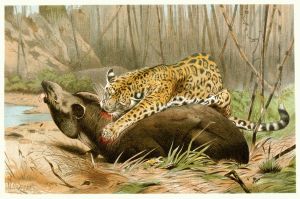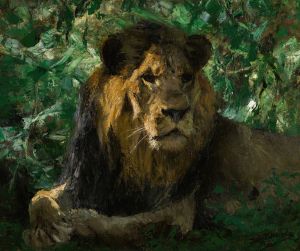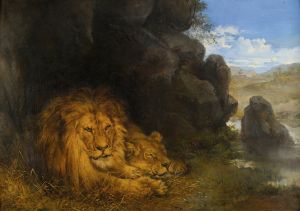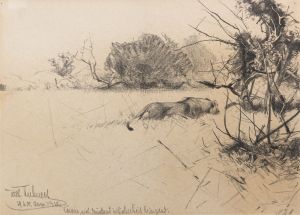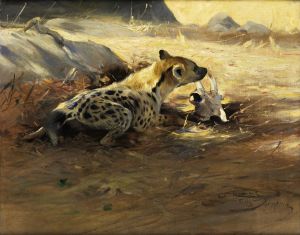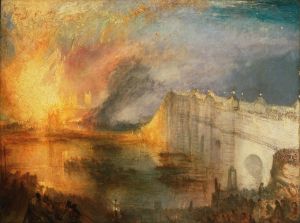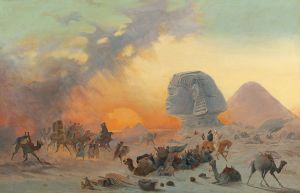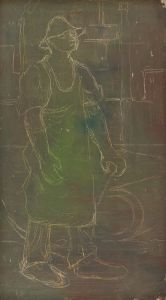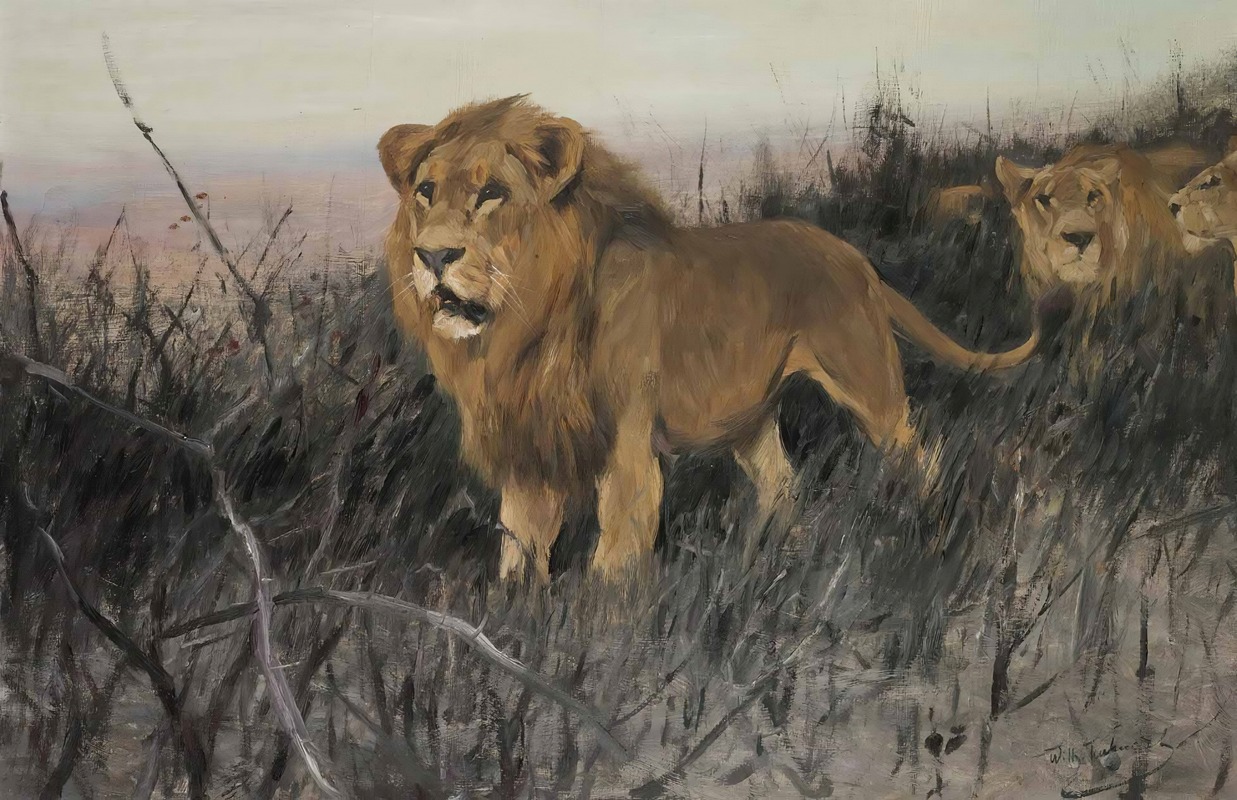
Löwen In Verbrannter Steppe
A hand-painted replica of Wilhelm Kuhnert’s masterpiece Löwen In Verbrannter Steppe, meticulously crafted by professional artists to capture the true essence of the original. Each piece is created with museum-quality canvas and rare mineral pigments, carefully painted by experienced artists with delicate brushstrokes and rich, layered colors to perfectly recreate the texture of the original artwork. Unlike machine-printed reproductions, this hand-painted version brings the painting to life, infused with the artist’s emotions and skill in every stroke. Whether for personal collection or home decoration, it instantly elevates the artistic atmosphere of any space.
Wilhelm Kuhnert was a renowned German painter and illustrator, born on September 28, 1865, in Oppeln, Prussia, now known as Opole, Poland. He is best known for his detailed and realistic depictions of wildlife, particularly African animals. Kuhnert's work was characterized by his dedication to capturing the essence of the animals he painted, often traveling to Africa to observe them in their natural habitats.
One of his notable works is "Löwen In Verbrannter Steppe," which translates to "Lions in a Burnt Steppe." This painting exemplifies Kuhnert's skill in portraying the majesty and power of lions, set against the backdrop of a scorched landscape. The painting captures a group of lions, likely a pride, navigating through a barren and charred steppe, which highlights the harsh and unforgiving environment they inhabit.
Kuhnert's ability to depict the intricate details of the lions' fur and the texture of the landscape demonstrates his keen observation skills and his commitment to realism. His use of color and light in "Löwen In Verbrannter Steppe" adds depth and dimension to the painting, bringing the scene to life and allowing viewers to feel the intensity of the African sun and the desolation of the burnt terrain.
Throughout his career, Kuhnert was celebrated for his contributions to wildlife art. He was a member of the Berlin Artists' Association and exhibited his work extensively in Germany and abroad. His paintings were not only appreciated for their artistic merit but also valued for their educational content, providing insights into the behavior and habitats of African wildlife.
Kuhnert's travels to Africa were instrumental in shaping his artistic vision. He made several trips to the continent between 1891 and 1912, during which he meticulously studied and sketched the animals he encountered. These expeditions allowed him to gather firsthand knowledge and experience, which he later translated into his paintings. His dedication to authenticity set him apart from many of his contemporaries, who often relied on secondhand accounts or zoo specimens for their wildlife art.
"Löwen In Verbrannter Steppe" is a testament to Kuhnert's passion for wildlife and his exceptional talent as an artist. The painting not only captures the physical attributes of the lions but also conveys a sense of their strength and resilience in the face of adversity. It reflects Kuhnert's deep respect for the natural world and his desire to share its beauty and complexity with a wider audience.
Wilhelm Kuhnert's legacy continues to influence wildlife artists today. His works are held in high regard and can be found in various art collections and museums around the world. "Löwen In Verbrannter Steppe" remains a significant piece within his oeuvre, exemplifying his mastery of the wildlife genre and his enduring impact on the art world.






